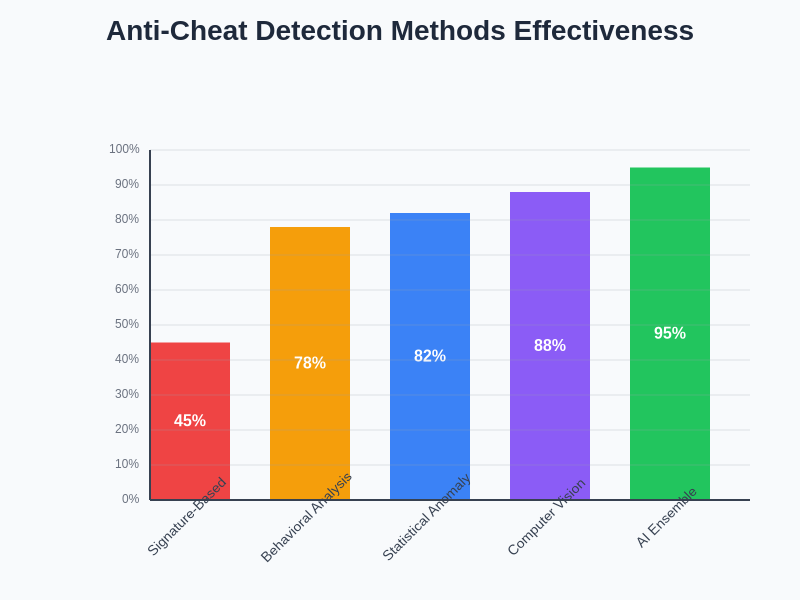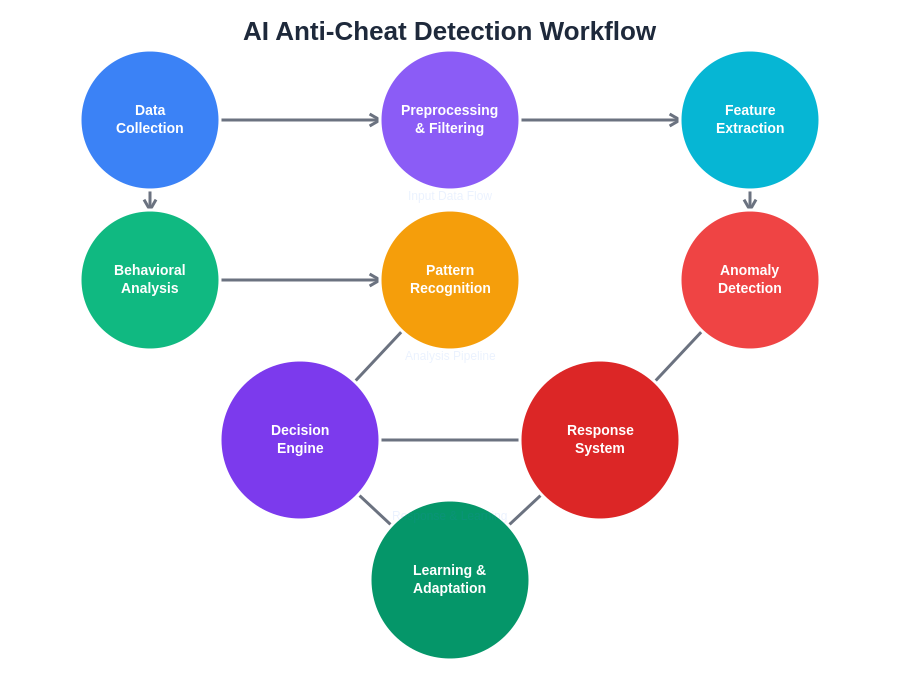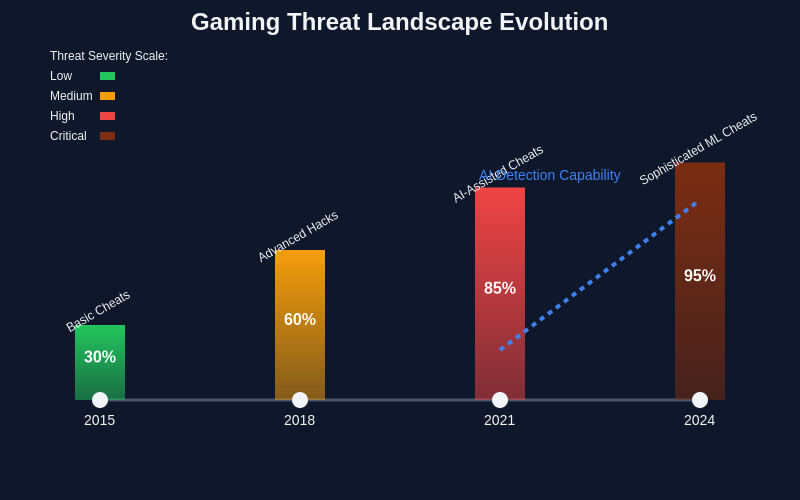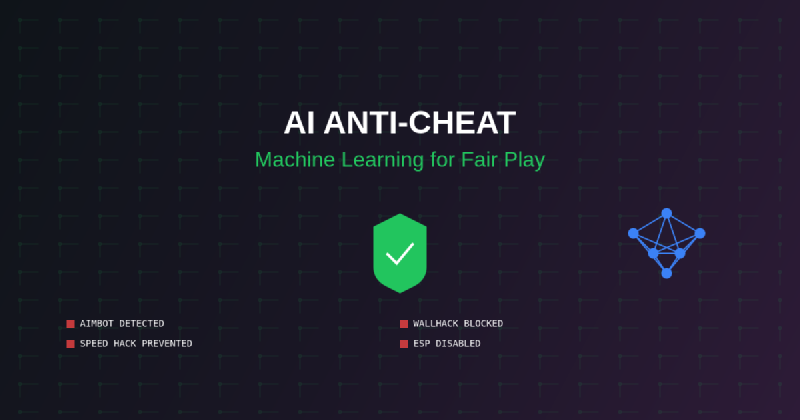The gaming industry faces an unprecedented challenge in maintaining fair play as sophisticated cheating methods continue to evolve alongside technological advancement. Traditional anti-cheat systems, once effective against basic exploits and modifications, now struggle against the complexity of modern cheating techniques that leverage advanced programming, hardware manipulation, and artificial intelligence. This escalating arms race has necessitated a revolutionary approach to gaming security, leading to the development of artificial intelligence-powered anti-cheat systems that represent the cutting edge of fair play enforcement.
Discover the latest gaming AI innovations to understand how machine learning is transforming not just anti-cheat detection but the entire gaming ecosystem. The integration of AI into gaming security represents a fundamental shift from reactive detection methods to proactive threat prevention, creating an environment where fair play is maintained through intelligent, adaptive, and increasingly sophisticated technological solutions.
The Evolution of Cheating in Modern Gaming
The landscape of gaming cheats has transformed dramatically from simple memory modification tools and basic exploits to sophisticated systems that can analyze game states, predict optimal strategies, and even mimic human behavior patterns to avoid detection. Modern cheating software employs machine learning algorithms, computer vision techniques, and advanced statistical analysis to provide users with unfair advantages while remaining undetectable by traditional security measures.
Contemporary cheating methods include pixel-perfect aim assistance through computer vision, movement pattern optimization using machine learning models, and behavioral mimicry systems that analyze legitimate player data to create realistic cheating profiles. These advanced techniques have rendered conventional signature-based detection methods largely ineffective, as modern cheats can adapt their behavior in real-time, modify their operational patterns, and even learn from previous detection attempts to improve their evasion capabilities.
The sophistication of modern cheating tools has reached a level where they can analyze game mechanics, predict opponent behavior, and execute complex strategies with superhuman precision while maintaining behavioral patterns that appear convincingly human to traditional detection systems. This evolution has necessitated an equally sophisticated response from the gaming industry, leading to the development of AI-powered anti-cheat systems that can match and exceed the complexity of the threats they face.
Foundations of Machine Learning Anti-Cheat Systems
Machine learning anti-cheat systems operate on fundamentally different principles than traditional detection methods, employing complex algorithms that can identify patterns, anomalies, and behaviors that would be impossible for rule-based systems to detect. These systems utilize vast datasets of player behavior, game state information, and historical cheating patterns to build sophisticated models that can distinguish between legitimate exceptional performance and artificial enhancement.
The foundation of effective ML anti-cheat systems lies in their ability to analyze multiple data streams simultaneously, including player input patterns, movement trajectories, reaction times, decision-making sequences, and statistical performance metrics. By examining these diverse data points in conjunction, machine learning models can identify subtle inconsistencies and patterns that indicate artificial assistance or enhancement, even when individual metrics might appear within normal ranges.
Explore advanced AI solutions with Claude for developing sophisticated detection algorithms that can adapt to evolving threat landscapes and maintain effective security measures. The mathematical foundations of these systems rely on advanced statistical analysis, pattern recognition algorithms, and neural network architectures that can process enormous amounts of data in real-time while maintaining high accuracy and low false positive rates.
Behavioral Pattern Analysis and Player Profiling
One of the most powerful aspects of AI-driven anti-cheat systems is their ability to create detailed behavioral profiles for individual players, establishing baseline patterns of legitimate play that can be used to identify deviations indicative of cheating. These systems analyze thousands of micro-behaviors including mouse movement patterns, keyboard timing sequences, reaction time distributions, and decision-making processes to create comprehensive behavioral fingerprints unique to each player.
Behavioral analysis extends beyond simple statistical metrics to encompass complex patterns such as spatial awareness consistency, target prioritization logic, resource management strategies, and tactical decision-making sequences. Machine learning models can identify when a player’s behavior suddenly becomes inconsistent with their established patterns, detecting scenarios where external assistance might be influencing their performance in ways that traditional metrics would miss.
The sophistication of behavioral profiling systems allows them to distinguish between natural skill improvement, temporary performance variations due to external factors, and artificial enhancement through cheating tools. These systems can account for factors such as different gaming sessions, varying levels of focus and concentration, and the natural learning curve associated with game mastery, ensuring that legitimate players are not falsely flagged while maintaining sensitivity to actual cheating attempts.

The comparative effectiveness of different anti-cheat detection methods demonstrates the clear superiority of AI-powered approaches over traditional signature-based systems. Machine learning ensemble methods achieve the highest detection rates while maintaining acceptable false positive levels, making them the preferred choice for modern gaming security implementations.
Real-Time Detection and Response Mechanisms
Modern AI anti-cheat systems operate in real-time, continuously monitoring player behavior and game states to provide immediate detection and response to cheating attempts. These systems employ streaming analytics and edge computing techniques to process enormous amounts of data with minimal latency, ensuring that cheating detection does not impact game performance or player experience while maintaining comprehensive security coverage.
Real-time detection mechanisms utilize ensemble learning approaches that combine multiple specialized models, each designed to identify specific types of cheating behavior. These models work in parallel, analyzing different aspects of player performance simultaneously and combining their outputs to make final determination decisions with high confidence levels and minimal false positive rates.
The response mechanisms integrated into modern AI anti-cheat systems extend beyond simple account bans to include graduated response protocols, behavioral modification interventions, and educational approaches designed to discourage cheating while maintaining positive player experiences for legitimate users. These systems can implement temporary restrictions, performance adjustments, or enhanced monitoring protocols based on the severity and type of detected violations.
Computer Vision and Aim Detection
Computer vision represents one of the most critical components of modern AI anti-cheat systems, particularly in first-person shooter games where aim assistance represents the most common and impactful form of cheating. These systems employ advanced image processing algorithms and neural network architectures to analyze player aiming patterns, movement trajectories, and target acquisition behaviors in ways that can identify artificial assistance with remarkable accuracy.
Advanced computer vision anti-cheat systems can detect subtle indicators of artificial aim assistance including unnaturally smooth movement patterns, impossible acceleration profiles, pixel-perfect target tracking, and reaction times that exceed human physiological limitations. These systems analyze not just the final aiming result but the entire trajectory and decision-making process that leads to target acquisition and engagement.
Enhance your research capabilities with Perplexity for comprehensive analysis of computer vision applications in gaming security and anti-cheat development. The integration of computer vision technologies with behavioral analysis creates multi-layered detection systems that can identify cheating attempts even when individual components might appear legitimate in isolation.
Statistical Anomaly Detection and Performance Analysis
Statistical anomaly detection forms the mathematical backbone of effective AI anti-cheat systems, employing advanced statistical models and machine learning algorithms to identify performance patterns that deviate significantly from established norms and expectations. These systems analyze vast amounts of player performance data to establish statistical baselines and identify outliers that may indicate artificial enhancement or cheating.
Performance analysis extends beyond simple accuracy metrics to encompass complex statistical relationships between different aspects of player performance, including consistency patterns, improvement trajectories, situational performance variations, and comparative analysis against peer groups with similar skill levels and experience. Machine learning models can identify subtle statistical signatures that indicate artificial assistance even when overall performance metrics appear within reasonable ranges.
The sophistication of statistical analysis in modern anti-cheat systems allows them to account for natural variation in human performance while maintaining sensitivity to artificial enhancement. These systems can distinguish between exceptional legitimate performance, lucky streaks, and systematic artificial improvement, ensuring accurate detection while minimizing false positives that could impact legitimate high-skilled players.
Network Analysis and Communication Monitoring
Network-based detection represents a crucial component of comprehensive AI anti-cheat systems, analyzing communication patterns, data transmission characteristics, and network behavior to identify indicators of external assistance or unauthorized modifications. These systems monitor network traffic patterns, communication protocols, and data exchange sequences to detect anomalies that might indicate cheating software operation.
Advanced network analysis systems can identify unauthorized communication channels, external data injection, and network-based assistance tools that might not be detectable through client-side monitoring alone. These systems employ deep packet inspection, traffic flow analysis, and communication pattern recognition to maintain comprehensive security coverage across all potential attack vectors.
The integration of network analysis with client-side detection creates multi-dimensional security systems that can identify sophisticated cheating attempts that might evade individual detection methods. These systems can detect coordinated cheating attempts, external coaching systems, and network-based assistance tools that rely on real-time data exchange or remote assistance.
Hardware-Level Detection and System Analysis
Modern AI anti-cheat systems extend their detection capabilities to hardware-level monitoring and system analysis, identifying unauthorized hardware modifications, external devices, and system-level manipulations that traditional software-based detection methods cannot address. These systems employ advanced system fingerprinting, hardware behavior analysis, and peripheral device monitoring to maintain comprehensive security coverage.
Hardware-level detection systems can identify external assistance devices, hardware-based input modification tools, and system-level manipulations that might provide unfair advantages while remaining invisible to software-based detection methods. These systems analyze hardware behavior patterns, system resource utilization, and device interaction sequences to identify anomalies that might indicate cheating attempts.
The sophistication of hardware-level detection extends to identifying virtual machine environments, hardware spoofing attempts, and system-level modifications designed to evade detection. These systems maintain comprehensive awareness of the entire system environment while respecting user privacy and system security requirements.
Machine Learning Model Training and Data Management
The effectiveness of AI anti-cheat systems depends critically on the quality and comprehensiveness of training data used to develop and refine machine learning models. These systems require enormous datasets encompassing legitimate player behavior across diverse skill levels, gaming scenarios, and environmental conditions, as well as comprehensive examples of various cheating methods and their behavioral signatures.
Training data management involves sophisticated data collection, annotation, and validation processes that ensure model accuracy while protecting player privacy and maintaining ethical data usage standards. These systems must balance the need for comprehensive behavioral analysis with respect for user privacy and data protection requirements, implementing advanced anonymization and data protection techniques.
Model training processes employ advanced machine learning techniques including supervised learning, unsupervised anomaly detection, and reinforcement learning approaches to create robust detection systems that can adapt to evolving threats while maintaining high accuracy and low false positive rates. Continuous model updating and retraining ensures that detection systems remain effective against new cheating methods and evolving threat landscapes.

The comprehensive AI anti-cheat detection workflow illustrates the sophisticated pipeline that processes player data through multiple analysis stages, from initial data collection through final response system activation. This multi-layered approach ensures thorough analysis while maintaining real-time performance requirements essential for gaming applications.
Integration with Game Development and Design
The integration of AI anti-cheat systems with game development processes represents a fundamental shift toward security-by-design approaches that consider fair play enforcement as a core component of game architecture rather than an afterthought. Modern game development increasingly incorporates anti-cheat considerations into fundamental design decisions, creating games that are inherently more resistant to cheating while maintaining engaging and competitive gameplay experiences.
Game design integration involves implementing server-side validation, authoritative game state management, and distributed verification systems that reduce the attack surface available to potential cheaters while maintaining responsive and engaging gameplay. These architectural approaches complement AI-based detection systems by reducing the opportunities for successful cheating attempts.
The collaboration between game designers and security specialists has led to innovative approaches to fair play enforcement that enhance rather than detract from player experience. These approaches include dynamic difficulty adjustment, performance normalization systems, and competitive balancing mechanisms that maintain fair play while preserving the excitement and challenge that make games engaging.
Privacy, Ethics, and Player Rights
The implementation of comprehensive AI anti-cheat systems raises important questions about player privacy, data collection ethics, and the balance between security effectiveness and user rights. These systems necessarily collect and analyze detailed behavioral data, raising concerns about privacy protection, data security, and the potential for misuse of personal information collected for security purposes.
Ethical implementation of AI anti-cheat systems requires transparent data usage policies, robust privacy protection measures, and clear communication with players about data collection and analysis practices. These systems must comply with relevant privacy regulations while maintaining effectiveness in detecting and preventing cheating attempts.
The development of privacy-preserving detection techniques, including differential privacy approaches and federated learning methods, represents an important area of ongoing research aimed at maintaining effective security while protecting user privacy. These approaches seek to enable comprehensive cheat detection while minimizing the collection and retention of personally identifiable information.
Industry Impact and Competitive Gaming
The implementation of sophisticated AI anti-cheat systems has had profound impacts on competitive gaming, esports, and the broader gaming industry by enabling more reliable and fair competitive environments. These systems have increased confidence in competitive gaming outcomes, reduced the impact of cheating on tournament integrity, and enabled the growth of professional gaming by ensuring that competition results reflect actual player skill rather than technological advantage.
Professional esports organizations have increasingly adopted AI-powered anti-cheat systems to maintain competitive integrity and protect the substantial financial investments associated with professional gaming. These systems enable more reliable tournament outcomes, increase sponsor confidence, and support the continued growth of competitive gaming as a legitimate sport and entertainment medium.
The broader gaming industry has benefited from improved anti-cheat capabilities through increased player retention, reduced support costs associated with cheating complaints, and improved overall game quality and player satisfaction. Fair play enforcement has become a significant competitive advantage for game developers and publishers seeking to maintain healthy and engaging gaming communities.
Future Developments and Emerging Technologies
The future of AI anti-cheat systems promises even more sophisticated detection capabilities through the integration of emerging technologies including quantum computing, advanced neural network architectures, and next-generation behavioral analysis techniques. These developments will enable more accurate detection, reduced false positive rates, and improved adaptation to evolving cheating methods.

The evolution of gaming threats demonstrates an escalating arms race between cheating sophistication and detection capabilities. As cheating methods become more advanced and AI-assisted, anti-cheat systems must continuously evolve to maintain effectiveness, with AI detection capabilities showing significant promise in addressing the most sophisticated modern threats.
Emerging technologies such as federated learning, edge computing, and advanced cryptographic techniques will enable more effective and privacy-preserving anti-cheat systems that can maintain comprehensive security while respecting user privacy and data protection requirements. These technologies will enable distributed detection systems that can share threat intelligence while protecting individual user data.
The continued evolution of cheating methods will drive ongoing innovation in anti-cheat technology, leading to an ongoing technological arms race that pushes the boundaries of what is possible in automated security and fair play enforcement. This evolution will require continued investment in research and development, collaboration between security researchers and game developers, and ongoing adaptation to emerging threats and challenges.
The integration of AI anti-cheat systems with broader gaming ecosystems will enable more comprehensive and effective security solutions that can adapt to evolving threats while maintaining engaging and fair gaming experiences for all players. The future of gaming security lies in intelligent, adaptive, and increasingly sophisticated systems that can maintain fair play while preserving the excitement and challenge that make games compelling and enjoyable.
Disclaimer
This article is for informational and educational purposes only and does not constitute professional security advice. The information presented reflects current understanding of AI anti-cheat technologies and their applications in gaming security. Readers should conduct their own research and consult with security professionals when implementing anti-cheat systems. The effectiveness of anti-cheat measures may vary depending on specific implementation details, threat landscapes, and gaming environments. All anti-cheat implementations should comply with applicable privacy laws and regulations.
